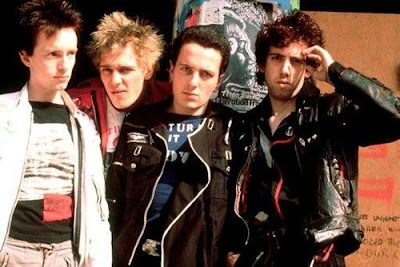 |
| The Clash: The Only Band That Matters |
In these troubled days and times, the first lesson learned by young music journalists is how to write lists. It doesn’t matter what you’re rating – albums, musicians, record labels – as long as it’s guaranteed to piss off half your readership and confirm the supremely good taste of the other half. Most importantly, lists of, say, “the top two thousand chord-crunching guitar gods” are certain to grab eyeballs, which placates bored and jaded advertisers who might take their filthy lucre elsewhere...
The Reverend certainly isn’t above such hijinks and, during my six-year-plus stint as the About.com “Blues Expert” circa 2008-2014, I was required to create numerous lists and slideshows (‘memba them?), often utilizing corporate-approved, SEO-friendly “key words” like “lacrosse,” “Obama,” or “head cheese,” largely because the bosses had already paid big bucks for some dodgy roster of Google-guaranteed dictionary entries from some grifty company touting their ninja-like search-engine prowess.
In this spirit, I found inspiration in a recent Facebook discussion in which I was informed by one tender young soul that she was 64 years old and was “there” and, therefore, she knew more about the subject than I – a rockcrit who has been writing about punk-rock since it was in diapers – and that, contrary to my opinion, the Dead Kennedys weren’t a punk band, dammit! That debatable position got my cerebellum a quivering, so I figured that I’d scribble my own list of the twelve most important punk-rock bands.
As much as I love pre-punk rockers like the Dictators, the Flamin’ Groovies, and the New York Dolls, I haven’t included them below no matter how significant their influence on the genre may have been. If the list seems tilted towards American bands, that’s my experience, and although Britania ruled the waves from 1976-78, by ’79 the Yanks had clearly picked up the punk-rock torch and ran with it. One last caveat – your list is probably different, so you can bitch at me in the comments below…
Godfather of Punk:
Johnny Thunders
An exception, of sorts, to my ‘no NY Dolls’ comment above,
Thunders’ solo career was clearly a major influence on punk and other
raucous-based sleaze-rock lifeforms. After the Dolls, the guitarist formed the
Heartbreakers, who shipped off to Merry Ole England to take part of the “Anarchy
Tour” with the Clash and the Damned. The Heartbreakers’ only LP, 1977’s
L.A.M.F., remains a punk-rock textbook to this day while Thunders’ proper solo
debut, 1978’s So Alone, bridged the gap between old-school rock and the new
wave. Recorded with Heartbreakers Walter Lure and Billy Rath and with studio
contributors like Phil Lynott (Thin Lizzy), Steve Marriott (Humble Pie),
Chrissie Hynde (The Pretenders), Peter Perrett (the Only Ones), and Steve Jones
and Paul Cook (Sex Pistols), So Alone is a bona fide punk classic and Thunder’s
best album.
12. Green Day
A lot
of people might argue about Green Day being included on this list, but I’d
contend that no single band did more to revive a moribund mid-‘90s punk-rock
scene than the trio of Billie Joe Armstrong, Mike Dirnt, and Tré Cool. The Bay
area band made its bones playing 924 Gilman and coming up through the indie
label ranks but when their sophomore album, Kerplunk, sold better than 50k
copies for Lookout! Records, the major labels took notice.
Green Day’s
Reprise Records debut, Dookie, has sold better than 20 million copies worldwide
to date and opened the door for bands like Bad Religion, Rancid, NoFX,
Descendents, and Pennywise to walk through and achieve varying levels of
success. Subsequent multi-Platinum™ albums like Insomniac, Nimrod, and the
classic American Idiot have seen Green Day evolve beyond their punk roots to
become a solid rock ‘n’ roll outfit. In the meantime, they are arguably the
best-selling punk band of all time.
11. The Saints
Although
Australia’s Radio Birdman could easily be included in this position, their Motor
City-styled musical mayhem didn’t reach U.S. audiences until Deniz Tek and Rob
Younger had moved onto other dalliances. Still, Radios Appear is a great rock
‘n’ roll album. The Saints, on the other hand, successfully made the leap from
the minor league Australian punk scene to the bright lights of London and, over
the course of three critically-acclaimed albums, forged a unique identity based
on a faster-louder sound fueled by chainsaw guitars and relentless tempos.
Formed in 1973 by singer Chris Bailey, guitarist Ed Kuepper, and drummer Ivor
Hay, they released their classic 1976 single “(I’m) Stranded” before the Damned
or the Sex Pistols could get their rage cemented onto vinyl, and their 1977
single “This Perfect Day” hit #34 on the U.K. charts.
Albums like 1977’s
(I’m) Stranded and 1978’s Eternally Yours (impressively produced by Bailey and
Kuepper rather than some label hack) saw the band pursuing its own muse,
refusing to become EMI’s idea of a cookie-cutter punk band. The band’s
critically-acclaimed but commercially-unsuccessful third album, Prehistoric
Sounds, further expanded the Saints’ musical vista, but after they were dropped
by EMI, Kuepper left the band to Bailey, who carried on with new musicians for a
handful of albums throughout the 1980s that failed to capture their early
magic.
10. Bad Religion
Although they were
contemporaries of similar hardcore innovators as Minor Threat, the Germs, and
Black Flag, Bad Religion didn’t really infect the rock mainstream with their
erudite, literary lyrics and machine-gun instrumentation until the 1990s
punk-rock revival. By the time that Bad Religion took their sound to the major
leagues with 1994’s excellent Stranger Than Fiction, they’d already released
seven albums through their own indie Epitaph Records imprint, from 1982’s How
Could Hell Be Any Worse? through 1993’s Recipe For Hate. Although not as
notorious or controversial as many of their contemporaries, Bad Religion’s sly
social commentary and uncompromising political stance had a profound influence
on bands like Green Day, Rise Against, Anti-Flag, and the Offspring.
When Bad Religion signed with Atlantic Records for Stranger Than Fiction,
a lot of old fans cried “sell-out,” but I defy the average punter to
legitimately argue that a performance like “21st Century (Digital Boy)” or
“Better Off Dead” is weaker, musically or lyrically than, say, “Modern Man” or
“American Jesus.” The Atlantic association resulted in four solid albums that
inched their way into the upper reaches of the album chart and, as they were
afforded a friendlier production budget, helped bring a score of new fans to the
band’s later Epitaph releases like The Dissent of Man (2010) or True North
(which actually charted Top 20 in 2013!). Additionally, Epitaph’s release of
albums from bands like Rancid, the Offspring, Hot Water Music, and Pennywise
helped fuel the flames of the ‘90s punk revival.
9. The Germs
I could have just as easily included Richard
Hell & the Voidoids at number eight, the band’s lone album, Blank
Generation, providing both a cultural identity (“we’re the blank generation”) as
well as a personal style (safety pins, etc) for punk-rock to anchor itself. But
the Germs, equally-significant in their influence, had one thing that Mr. Myers,
et al lacked – mythology. Specifically, that of singer Darby Crash (née Jan Paul
Beahm), whose untimely death insured the short-lived band’s legacy. Crash wasn’t
the first rocker to “live fast and die young” – Jim, Jimi, and Janis beat him to
it by the better part of a decade – but he was one of the youngest, OD’ing on
heroin at the barely-legal age of 22 years.
Still, Crash
and the Germs rolled and roared through the nascent L.A. punk scene like a
runaway bulldozer. Formed in 1976 by school chums Crash and guitarist Pat Smear,
they added bassist Lorna Doom and drummer Don Bolles; this is the line-up that
recorded the Joan Jett-produced 1979 album (GI) which, in and of itself, was as
impressive a slab of white heat as any other U.S. punk band had released at the
time. It was the Germs’ appearance in director Penelope Spheeris’s The Decline
of Western Civilization documentary film that expanded the band’s reach beyond
the insular L.A. punk scene, however, carrying Darby’s self-destructive antics
to a welcoming audience of junior nihilists across the fruited plains. A 2007
biopic about the Germs, What We Do Is Secret, along with a tour by the re-formed
band (with actor Shane West, who played Crash in the movie, on the microphone),
brought the Germs’ high-voltage sound to the Warped Tour generation.
8.
Black Flag
The only constant in Black Flag is guitarist and songwriter Greg
Ginn, who has helmed his jolly band of karmic misfits since the band’s forming
in 1976 in Hermosa Beach CA. One of the first hardcore punk outfits in the U.S.,
Black Flag helped define the hardcore sound, then discarded it just as quickly
when Ginn’s musical obsessions took him far afield into heavy metal and free
jazz-styled instrumental wank-offs. Still, Ginn’s ever-changing Black Flag
roster had an indelible influence on punk-rock not only musically, but visually
through the debauched cover art and show flyers created by Raymond Pettibon
(Ginn’s brother) and through the band’s independent SST Records label, which
released influential (and entertaining) early albums by bands like the Meat
Puppets, Dinosaur Jr, the Minutemen, Sonic Youth, Bad Brains, and Hüsker Dü,
among others.
There were several distinct eras for Black
Flag, but two were particularly significant to the band’s legacy and importance
– the “Keith Morris era,” circa 1976-79 and the “Henry Rollins era,” from
1981-86. Morris only appeared on the band’s Nervous Breakdown EP and,
subsequently, the Everything Went Black and The First Four Years compilation LPs
before jetting from the Flag to form the Circle Jerks and, more recently, Off!
By contrast, Rollins appeared on six of the band’s seven full-length studio
albums, including classics like 1981’s Damaged and 1984’s My War, while his
hyper-intense on-stage persona turbocharged the band’s sound. An appearance in
The Decline of Western Civilization catapulted Black Flag beyond the confines of
SoCal, carrying their infamy around the world. Much like the Sex Pistols in the
U.K., Black Flag directly inspired the creation of bands like Slayer, Tool, and
Nirvana here in the states.
7. Minor Threat / Fugazi
What the
Dead Kennedys were to west coast hardcore, Minor Threat were to the eastern
seaboard. Formed in 1980 by singer Ian MacKaye, drummer Jeff Nelson,
bassist/guitarist Brian Baker, and guitarist Lyle Preslar, Minor Threat were
only together for around three years, releasing a handful of 45s, a pair of EPs,
and a single album, Out of Step, which defined “straight edge” punk for a
generation to follow. More importantly, the band was at the forefront of the
D.I.Y. indie rock scene, the Dischord Records label founded by MacKaye and
Nelson keeping records cheap and gradually expanding beyond releasing hardcore
punk records to include all styles of underground rock.
When Minor Threat
ran its course, MacKaye formed post-punk outfit Fugazi with guitarist Guy
Picciotto, bassist Joe Lally, and drummer Brendan Canty, the band releasing six
influential albums of often-experimental rock that expanded the possibilities of
hardcore punk into new creative territory. Fugazi were touring missionaries for
the D.I.Y. lifestyle, playing over 1,000 shows in all 50 U.S. states and
overseas, and with Dischord Records they walked it like they talked it,
releasing important and influential albums by bands like Government Issue, Rites
of Spring, Dag Nasty, and Jawbox.
6.
The Buzzcocks
Admittedly, the Buzzcocks’ enormous influence was initially
limited to the U.K. but, as the band’s timeless and effervescent singles like
“Orgasm Addict,” “What Do I Get?,” and “Ever Fallen In Love (With Somebody You
Shouldn’t’ve)” meandered across the ocean as import vinyl, they picked up
numerous fans stateside. Formed in 1976 by Pete Shelley and Howard Devoto as a
musical outlet for their shared Velvet Underground obsession, the pair found
inspiration in the Sex Pistols and, before long, were opening for the
controversial band and rapidly building a following of their own. Fusing
power-pop roots with the energy and zealousness of punk-rock, the band racked up
eight chart singles in the U.K. through 1979. Devoto split shortly after “Orgasm
Addict,” eventually forming the art-punk outfit Magazine.
After Devoto’s
departure, talented bassist Steve Diggle switched over to guitar and shared
songwriting duties with Shelley, which brought a diversity to their sound that
led to the aforementioned string of hit singles. Meanwhile, in the U.S.,
listeners primed by the import 45s eagerly anticipated albums like Another Music
In A Different Kitchen and Love Bites (both 1978) and A Different Kind of
Tension (1979), which would all later be reissued domestically by I.R.S.
Records, which had released the Singles Going Steady compilation to some fanfare
in 1980. The band underwent its first of many break-ups in 1980, reuniting
several times throughout the years and, after Shelley’s unexpected death in
2018, Diggle carried on the Buzzcocks name, acquitting himself nicely with
2022’s Sonics In the Soul album. A Buzzcocks influence can be heard in bands
like the Smiths, Radiohead, and Superchunk, among many others.
5. The Dead Kennedys
Jon Young, writing for The Trouser
Press Record Guide (4th edition, 1991), said that “in the Dead Kennedys, America
finally produced a powerful, self-righteously moral band to match the fury of
the Sex Pistols,” considering them “as prime pioneers of American hardcore, the
Kennedys have been influential, not only by setting a style, sensibility and
commendable standards, but with their productive Alternative Tentacles label and
active support for grassroots rock activity.” Featuring the manic vocals and
socially-charged lyrics of frontman Jello Biafra, the DKs – guitarist East Bay
Ray, bassist Klaus Floride, and drummer D.H. Peligro – skewered American
traditions and ethics with albums like 1980’s Fresh Fruit For Rotting Vegetables
and 1985’s Frankenchrist.
The DKs weren’t without controversy, not only for
their incendiary name but also for an uncompromisingly leftist political stance.
The turmoil embroiling the band culminated in a 1986 obscenity trial that
eventually saw the trumped-up charges dropped, but censorship had already taken
its toll and, along with the band’s collective disillusionment with an
increasingly-violent hardcore scene, led to their break-up. Although the other
DKs got back together and moved on without Biafra as some sort of twisted covers
band, Biafra continues to support underground and left-of-the-dial styled bands
through Alternative Tentacles. The band shot across the punk rock firmament like
a comet, influencing followers like Bad Religion, Green Day, the Minutemen, and
Rage Against the Machine.
4. The Damned
English punk rockers the
Damned often don’t get the credit they deserve for their reach, innovation, and
influence. They were the first U.K. punk band to release a single (1976’s
blistering “New Rose”) and album (1977’s Nick Lowe-produced Damned Damned
Damned), and they were the first to brave touring the U.S., sailing west across
the Atlantic months ahead of the Pistols or the Clash. Although their second
album, Music For Pleasure, was unfairly slagged by hometown critics, the Nick
Mason (Pink Floyd) produced psych-punk LP has since received kinder reappraisal.
Subsequent album releases like 1979’s Machine Gun Etiquette (described as “T-Rex meets Motörhead”), 1980’s The Black Album, and 1985’s Phantasmagoria added elements of Goth and heavy metal to the band’s pioneering punk sound. The Damned are still rocking to this day, their 2023 album Darkadelic helping corrupt an entirely new generation of young punks.
3. The Ramones
Forming in 1974, the four “brothers” from Forest Hills, Queens NYC – Joey, Johnny, Dee Dee, and Tommy – would have a profound effect on the development of punk-rock in the U.S. Pursuing a stripped-down, no-frills style of guitar-rock that incorporated elements of pop and psychedelic-rock, the band’s fast ‘n’ loud delivery, Joey’s original vocals, and their junk culture lyrics quickly earned the Ramones a loyal local following circa 1975. Bridging the gap between proto-punkers like the Dictators and the New York Dolls and first-generation punk-rock outfits like the Dead Boys, Patti Smith, and Richard Hell & the Voidoids, the Ramones brought a unique sound and energy to rock ‘n’ roll that influenced scores of bands to follow. Signing with Sire Records, the Ramones notoriously recorded their self-titled 1976 album for a sparse budget of $6,400; the album would go on to sell hundreds of thousands of copies and eventually be certified for Gold™ Record status.
They would follow their critically-acclaimed debut with a pair of albums in ’77 – Leave Home and Rocket To Russia – which etched in stone the band’s reputation as punk pioneers. The total run time of those first three essential LPs was roughly 90-minutes which, with a total of 42 songs among them, worked out to slightly more than two minutes per song; the Ramones were clearly not working by the hour. Road To Ruin (1978) saw the band begin to expand their sound to incorporate guitar solos and pop melodies, and they worked with legendary producer Phil Spector for 1980’s underrated End of the Century. The band broke up in 1996 with fourteen studio albums under their belt that incorporated everything from punk and hard rock to pop and psychedelia. Influential far beyond their often-meager album sales, the Ramones left behind an undeniable legacy that influenced bands worldwide, from the Misfits, the Beastie Boys, Rancid, and Green Day stateside to the Clash, Sham 69, and the Damned in the U.K. and even Teenage Head in Canada and Shonen Knife in Japan.
2. Sex
Pistols
It helps that the Sex Pistols’ legacy that they self-destructed
after less than three years together, leaving the vultures to pick at the band’s
decaying corpse for decades with scores of dodgy ‘odds ‘n’ sods’ and
bootleg-quality live album releases. As for their single legit album, 1977’s
Never Mind the Bollocks followed a trio of Top 10 U.K. hit singles – “God Save
the Queen,” “Pretty Vacant,” and “Holidays In the Sun” – each seemingly more
controversial than the previous.
The string played out through 1979 and
the band’s demise, with non-LP singles like “No One Is Innocent,” “Something
Else,” “Silly Thing,” and a cover of Eddie Cochran’s classic “C’mon Everybody”
all charting Top 10. The Pistols directly inspired a generation of bands to
follow, and we have Johnny Rotten and the gang to thank for the Buzzcocks,
Siouxsie and the Banshees, Billy Idol, Joy Division, the Smiths, and many
others. Outspoken, outrageous, and obscene, the Sex Pistols were a generational
cultural phenomenon.
1. The Clash
“The Only Band That Matters”
really was, the Clash following their own musical path for the better part of a
decade, discarding the tiring cliches of British punk in favor of musical
innovation that brought elements of reggae, funk, and rockabilly to their
guitar-drenched and energetic sound. With roots in Britain’s pub-rock scene, the
Clash were possibly the best band inspired by the Sex Pistols’ Sturm und Drang,
and when Mick Jones and Joe Strummer were brought together, magic happened.
The band’s first two albums – 1977’s The Clash and 1978’s Give ‘Em Enough
Rope – are critically-acclaimed, punk rock classics that crossed over to the pop
charts, but their third, 1979’s London Calling, was a commercial blockbuster on
both sides of the pond and the band’s U.S. breakthrough. The confusing and
uneven three-disc Sandinista! (1980) was seen by many as a step backwards (it
might have been better condensed to two LPs), but 1982’s Combat Rock –a Top 10
disc in both the U.K. and the U.S. – solidified the Clash’s position as the most
important and influential bands from the “Class of ‘77” (the less said of Cut
the Crap, the better…)
Honorable Mention:
The Avengers, Bad Brains, The Boomtown Rats, The Dead Boys, Richard Hell &
the Voidoids, The Minutemen, The Misfits, Operation Ivy, Rancid, Stiff Little
Fingers, X, and X-Ray Spex…
 |
| The Sex Pistols |
 | ||
| Green Day | |
 | ||
| The Germs |
 |
| The Dead Kennedys |
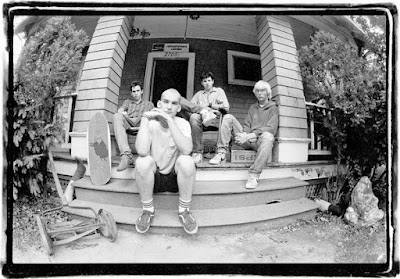 |
| Minor Threat |
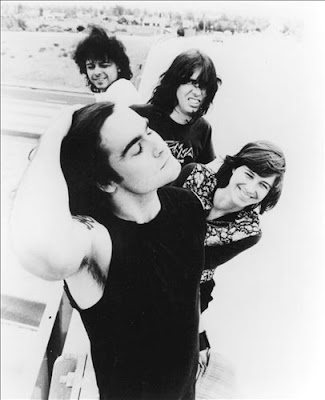 |
| Black Flag |


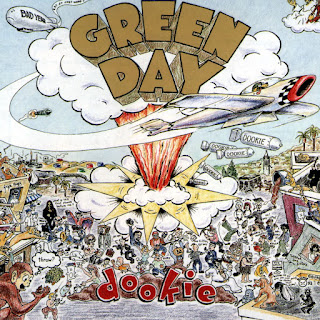
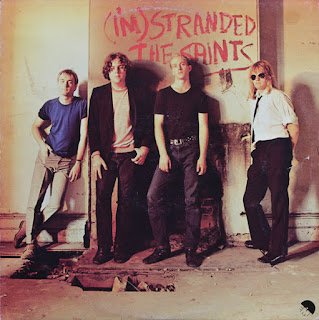


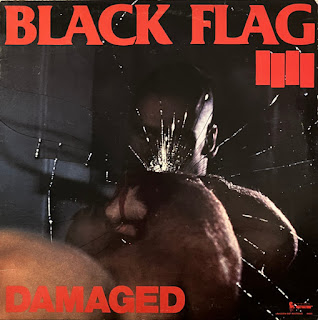



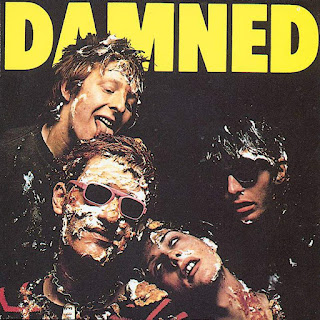
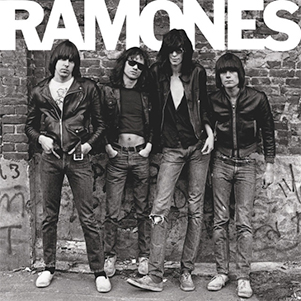


No comments:
Post a Comment
Note: Only a member of this blog may post a comment.